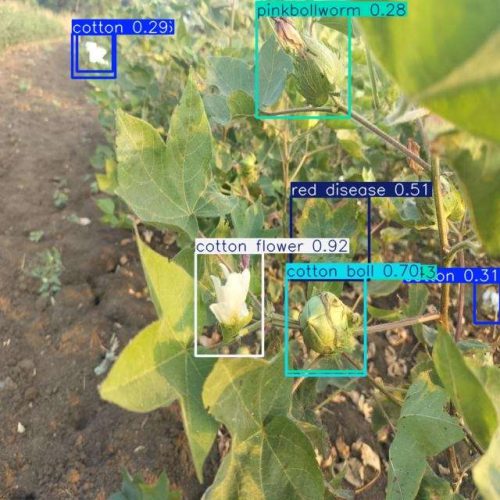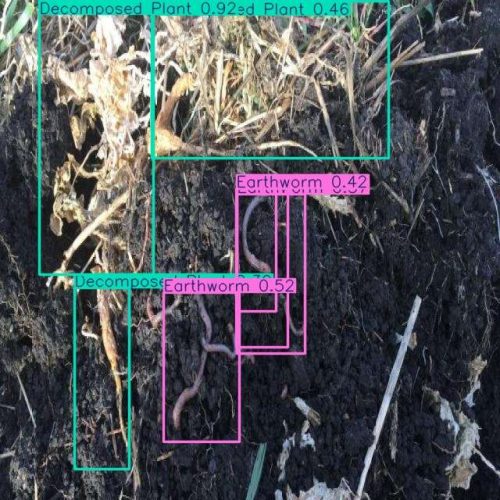Case Studies: Rover

Case Studies
Case Study: Unmanned Ground Vehicles (UGVs) Rover for Precision Agriculture - Enhancing Cotton Crop Monitoring and Soil Management with UGM-504


Executive Summary
The Unmanned Ground Module UGM-504 offers revolutionary advancements in precision agriculture. By utilizing AI-driven rovers, it enables accurate monitoring of cotton crops, soil health and irrigation conditions. With capabilities such as detecting pests, diseases, and assessing soil materials, the UGM-504 enhances farming efficiency, reduces labor costs, and promotes sustainable agricultural practices.
Background
Agriculture faces increasing pressure to meet global food demands while preserving natural resources. Traditional farming methods struggle to provide the precision needed for efficient crop management. The UGM-504 leverages AI-powered rovers to tackle these challenges by offering detailed, real-time insights into crop and soil health, thereby enhancing productivity and sustainability in agricultural operations.
Problem Statement
Traditional agriculture methods are resource-intensive, time-consuming, and prone to inefficiencies. Challenges such as pest infestations (e.g., pink bollworm) and soil health monitoring often lead to decreased yields and increased operational costs. Additionally, inconsistent irrigation and post-harvest processes further complicate crop management. A smart, AI-powered solution like the UGM-504 is necessary to address these inefficiencies in cotton farming and soil management.
Objectives
- Enhance Cotton Crop Monitoring: Detect plant health issues, pests (e.g., pink bollworm), and diseases such as red disease.
- Optimize Soil Health Assessment: Analyze key soil components (manure, compost, decomposed insects, earthworms, plants, leaves, and roots) to improve soil management practices.
- Streamline Irrigation: Offer real-time irrigation recommendations.
- Improve Post-Harvest Processing: Sort crops for consistent quality and reduced labor.
- Support Data-Driven Decisions: Provide crop data for informed decisions.
Solution:
The UGM-504 is an autonomous rover equipped with AI-powered vision, real-time sensors, edge computing, and obstacle avoidance, enabling it to navigate fields and perform tasks such as:
• Monitor Cotton Crop Health: Detect pests, diseases, and assess growth stages.
• Analyze Soil Conditions: Evaluate soil components for better management.
• Optimize Irrigation: Provide data-driven recommendations for water conservation.
• Enhance Post-Harvest Sorting: Classify crops by quality to streamline processing.
Implementation
- Site Assessment: Evaluated crop, soil, and irrigation conditions for rover deployment.
- AI Model Training: Developed models for cotton recognition, pest detection, and soil analysis.
- System Integration: Connected UGM-504 rover with farm management for real-time data.
- Pilot Testing: Tested rover for crop monitoring, pest detection, and soil analysis.
- Full Deployment: Implemented UGM-504 across farm for continuous monitoring.
Results
✅ 90% Accuracy in Monitoring – Enhanced early pest and disease detection.
✅ Optimized Soil Management – AI insights reduced fertilizer use, boosting soil fertility.
✅ 30% Water Savings – Smart irrigation maintained yields with less water.
✅ 40% Faster Harvest Sorting – Automated sorting streamlined post-harvest work.
✅ Sustainable Farming – Improved efficiency, reducing environmental impact.
Real-World Application
The UGM-504 enhances cotton farming with real-time crop monitoring, pest detection, and soil assessment, enabling precise irrigation and fertilization. It also ensures efficient post-harvest sorting, improving yield, reducing costs, and promoting sustainable farming.
Conclusion
The UGM-504 enhances precision agriculture with AI-driven crop monitoring, soil management, and post-harvest sorting. It boosts efficiency, reduces costs, and empowers farmers with data-driven insights for sustainable farming.
Future Prospects
The UGM-504 will leverage advanced AI for enhanced pest detection and real-time soil analysis. Future updates will integrate IoT sensors and cloud analytics for improved decision-making. These innovations will further increase autonomy, efficiency and sustainability in agriculture.
